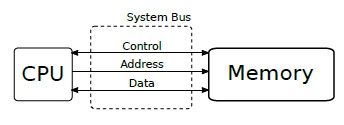About
RAM (Random-access memory) known also as physical memory is a component of the the primary memory
The word RAM is often associated with volatile types of memory (such as DRAM memory modules), where the information is lost after the power is switched off.
Physical memory is the memory installed on the host.
It is a memory storage device which:
- is volatile
- have some noticeable latency access
- have a significant larger capacity
Today, it takes the form of integrated circuits that allow stored data to be accessed in any order (i.e., at random access). “Random” refers to the idea that any piece of data can be returned in a constant time, regardless of its physical location and whether or not it is related to the previous piece of data.
Historically, early computers used delay lines, Williams tubes, or rotating magnetic drums as primary storage. By 1954, those unreliable methods were mostly replaced by magnetic core memory, which was still rather cumbersome. Undoubtedly, a revolution was started with the invention of a transistor, that soon enabled then-unbelievable miniaturization of electronic memory via solid-state silicon chip technology. This led to modern random-access memory (RAM).
Articles Related
Management
Size
RAM Architecture
where:
- the memory controller control the RAM. Currently, most processors have this device embedded, so the CPU has a dedicated memory bus connecting the processor to the RAM.
It is a primitive processor that can quickly find addresses and copy information stored in the addresses to/from the system bus. This works faster than if the processor did the work of reaching into storage to extract information.
Physical Implementation
At the physical level, RAM is implemented as a grid of cells that each contain :
- and an electrical device called a capacitor, which stores charge for short periods of time.
Type
- static random-access memory (SRAM) - fast but energy-consuming, offering lower memory areal density than DRAM.
DDR3
In computing, DDR3 SDRAM means double-data-rate three synchronous dynamic random access memory and is a random access memory.
Transfer rate
With data being transferred 64 bits at a time per memory module, DDR3 SDRAM gives a transfer rate of
<MATH> \frac{(\text{memory clock rate}) × 4 (\text{for bus clock multiplier} × 2 (\text{for data rate}) × 64 (\text{number of bits transferred})}{ 8 (\text{number of bits per byte}) } </MATH>
Thus with a memory clock frequency of 100 MHz, DDR3 SDRAM gives a maximum transfer rate of 6400 MB/s.


